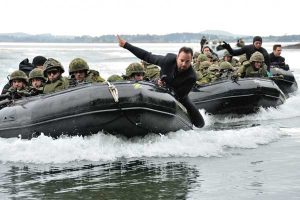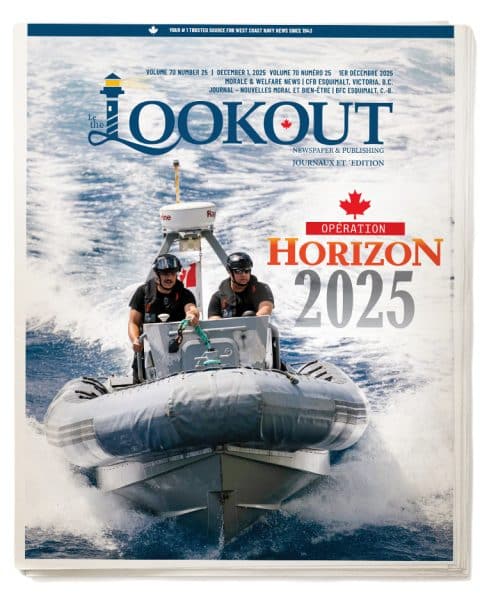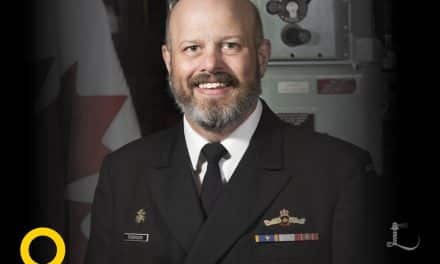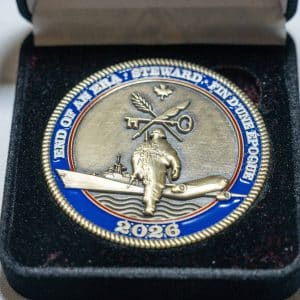
LS Paul Johnson indicates how close the Mark V Zodiac boat is to the shore as he helps bring a wave of Royal 22nd Regiment soldiers to land on a beach during Exercise Trident Fury 13 (JOINTEX).
During the May long weekend, army personnel from Valcartier, Quebec, joined local navy and air force elements to practice amphibious landings in a joint exercise (Joint Ex) designed to heighten interoperability between Canadian assets.
On May 18, more than 130 army soldiers deployed in Mark V Zodiac boats from HMC Ships Ottawa and Algonquin bound for a remote beach off William Head.
Once on shore their mission was to evacuate Canadian citizens from a mock hostile environment scenario and then safely transport them to awaiting Maritime Coastal Defence Vessel HMCS Saskatoon.
“We are very excited to take part in this exercise as we have been training since March,” said Battery Commander, Maj Sabastien Lemieux. “Amphibious operations involve taking a land element and projecting it to the shore. Usually we train on a unit level with army pretending to be navy. Since we have arrived on May 7 joining Trident Fury, we have learned the mechanics behind the maritime operations, and all the tactics and planning sequences of the maritime elements that need to be done in order to make the ship project the force to shore.”
The soldiers from Third Royal 22 Regiment Valcartier usually practice this type of training on the St. Lawrence River, and this is the first time it has been done using joint operations.
During the exercise Cmdre Scott Bishop and fleet staff sailed in Algonquin to oversee command of Joint Ex.
Sea King helicopters deployed from Ottawa and Algonquin monitored the situation on the ground.
“One challenge we have in an exercise like this is getting a ship to talk to an army unit ashore,” said Algonquin’s Executive Officer, LCdr Jeff Hutchinson. “We will take lessons away from this to understand each other’s challenges. It’s interesting to see each other’s cultures. We have different traditions, backgrounds, lingo and slang between navy and army. To put this all together makes for a very interesting exercise. Our objective is to identify strong and weak points of the operation and realize what we need to do to rectify those weaknesses.”
“It’s not just landing our troops on the shore; it’s learning all the elements we are exposed to,” said Maj Lemieux. “When you put everyone in the same room it opens our eyes to the difficulty of every aspect of the operation.”
-Shelley Lipke, Staff Writer









